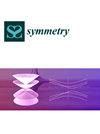基于自监督时空掩蔽策略的交通流量预测模型
IF 2.2
3区 综合性期刊
Q2 MULTIDISCIPLINARY SCIENCES
引用次数: 0
摘要
交通流预测是智能交通系统的一项重要功能。随着深度学习的兴起,基于深度神经网络构建交通流预测模型已成为当前的研究热点。目前大多数交通流预测方法都是从模型体系结构的角度进行设计的,仅使用未来时刻的交通特征作为监督信号,指导模型学习交通流的时空依赖性。然而,交通流数据本身包含丰富的时空特征,从数据中获取额外的自监督信号以辅助模型进一步探索潜在的时空依赖性是可行的。因此,我们提出了一种基于时空掩蔽策略的自监督交通流预测方法。采用对称骨架模型和非对称任务头组成的框架学习预测和时空上下文特征。具体来说,设计了一个时空上下文掩模重构任务,通过时空上下文信息强制模型重构被掩模特征,以帮助模型更好地理解数据中的时空上下文关联。为了避免模型仅仅根据数据的局部平滑性进行推断,而没有真正了解到数据的时空依赖性,我们对待重构的特征进行了时间移位操作。实验结果表明,与骨干模型相比,基于时空背景掩蔽策略的模型在超过30 min的较长预测时段内的预测性能平均提高了1.56%,最大提高了7.72%。本文章由计算机程序翻译,如有差异,请以英文原文为准。
Self-Supervised Spatiotemporal Masking Strategy-Based Models for Traffic Flow Forecasting
Traffic flow forecasting is an important function of intelligent transportation systems. With the rise of deep learning, building traffic flow prediction models based on deep neural networks has become a current research hotspot. Most of the current traffic flow prediction methods are designed from the perspective of model architectures, using only the traffic features of future moments as supervision signals to guide the models to learn the spatiotemporal dependence in traffic flow. However, traffic flow data themselves contain rich spatiotemporal features, and it is feasible to obtain additional self-supervised signals from the data to assist the model to further explore the underlying spatiotemporal dependence. Therefore, we propose a self-supervised traffic flow prediction method based on a spatiotemporal masking strategy. A framework consisting of symmetric backbone models with asymmetric task heads were applied to learn both prediction and spatiotemporal context features. Specifically, a spatiotemporal context mask reconstruction task was designed to force the model to reconstruct the masked features via spatiotemporal context information, so as to assist the model to better understand the spatiotemporal contextual associations in the data. In order to avoid the model simply making inferences based on the local smoothness in the data without truly learning the spatiotemporal dependence, we performed a temporal shift operation on the features to be reconstructed. The experimental results showed that the model based on the spatiotemporal context masking strategy achieved an average prediction performance improvement of 1.56% and a maximum of 7.72% for longer prediction horizons of more than 30 min compared with the backbone models.
求助全文
通过发布文献求助,成功后即可免费获取论文全文。
去求助
来源期刊

Symmetry-Basel
MULTIDISCIPLINARY SCIENCES-
CiteScore
5.40
自引率
11.10%
发文量
2276
审稿时长
14.88 days
期刊介绍:
Symmetry (ISSN 2073-8994), an international and interdisciplinary scientific journal, publishes reviews, regular research papers and short notes. Our aim is to encourage scientists to publish their experimental and theoretical research in as much detail as possible. There is no restriction on the length of the papers. Full experimental and/or methodical details must be provided, so that results can be reproduced.
 求助内容:
求助内容: 应助结果提醒方式:
应助结果提醒方式:


